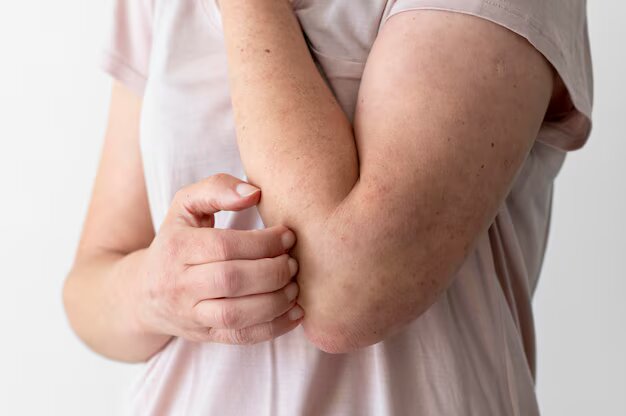Can Skin Cancer Resemble a Rash? Early Signs to Watch for on Scalp, Nose, and Legs

Skin cancer is one of the most common forms of cancer, and while it can present in various ways, many people wonder if skin cancer can appear as a rash. While a rash is not the most typical sign of skin cancer, some types of skin cancer can resemble a rash, which can lead to confusion. In this blog, we will explore how skin cancer may present itself, how to identify potential warning signs, and the importance of early detection.
Understanding Skin Cancer
Skin cancer occurs when abnormal cells grow uncontrollably on the skin. These abnormal cells usually develop due to overexposure to ultraviolet (UV) radiation from the sun or tanning beds. Skin cancer can be categorized into three main types: basal cell carcinoma (BCC), squamous cell carcinoma (SCC), and melanoma. Each type may present differently on the skin, and recognizing these differences is key to early diagnosis and treatment.
Can Skin Cancer Look Like a Rash?
In certain cases, skin cancer rash symptoms can be easily mistaken for benign conditions like eczema, dermatitis, or even psoriasis. Skin cancer may sometimes appear as a red, scaly patch or as a flat area that looks similar to a rash. This is more common in early-stage skin cancer pimple formations, where the skin cancer starts to resemble a small bump that might look like a regular pimple.
Basal cell carcinoma, the most common type of skin cancer, often starts as a small, flat, or raised bump that can be mistaken for a pimple or rash. However, unlike a rash, this bump will not heal and will grow slowly over time. While rashes may resolve on their own or with treatment, skin cancer will persist and gradually worsen if left untreated.
Signs of Early Stage Skin Cancer
There are a few key signs that can help differentiate early-stage skin cancer pimples or rash-like appearances from typical skin irritations:
- Persistent Bumps or Red Patches – Skin cancer often appears as a small bump that looks like a pimple but does not go away. In leg early stage skin cancer, you might see a persistent red patch on the skin that doesn’t respond to treatment or heals unusually slowly.
- Itching or Bleeding – Some forms of skin cancer, such as squamous cell carcinoma, may become itchy or bleed, especially when located in areas exposed to sunlight, like the scalp or nose. If you notice any persistent irritation, especially in these areas, it’s important to consult a healthcare professional.
- Lesions with Irregular Borders – Melanoma, the deadliest form of skin cancer, often presents as a mole or spot with irregular borders. These spots may start to change in color, size, or shape, unlike a typical rash or pimple.
Specific Areas Where Skin Cancer Appears
Skin cancer on scalp and skin cancer on nose are particularly concerning due to their exposure to the sun. These areas are often the most affected by UV radiation and are more susceptible to skin cancer development. Early detection in these areas is essential, as skin cancers located here can sometimes go unnoticed until they become more advanced.

Skin Cancer on the Nose
The nose is a common site for skin cancer on nose due to its frequent exposure to the sun. The cancer may start as a small pimple-like bump or red patch that does not heal. People often mistake it for an ordinary blemish, but if it persists, it could be a sign of early-stage skin cancer.
Skin Cancer on the Scalp
Skin cancer on scalp can be challenging to detect because it’s hidden beneath the hair. However, you may feel rough, scaly patches or notice areas that itch, bleed, or don’t heal. People who have thinning hair or are bald are especially vulnerable, as their scalps are more exposed to UV rays.
Skin Cancer on the Legs
Leg early stage skin cancer typically appears as small, reddish patches or bumps that do not heal. The legs are often a common spot for melanoma, especially in women. Unlike a typical rash, these lesions will persist and may begin to change in appearance, signaling the need for medical attention.
Why Early Detection is Important
Detecting skin cancer early is crucial for successful treatment. Skin cancer, when identified at an early stage, can often be treated effectively before it spreads. If you notice any changes in your skin, especially in areas frequently exposed to the sun, it’s important to have them checked by a dermatologist.
Some signs to look for include:
- New growths or bumps that don’t heal
- Red patches or rashes that persist
- Changes in existing moles or spots
- Itching, bleeding, or scaling of the skin
When to See a Doctor
If you have any skin lesions, bumps, or rashes that don’t heal after a few weeks, it’s time to consult a dermatologist. They can perform a biopsy to determine whether the lesion is benign or malignant. For individuals with a history of heavy sun exposure or previous skin cancer, regular check-ups are crucial.
In conclusion, while skin cancer may sometimes resemble a rash or a pimple, there are distinct signs that can help differentiate it from ordinary skin irritations. Paying attention to persistent changes in your skin, especially in sun-exposed areas like the scalp, nose, and legs, can help you catch early stage skin cancer before it becomes more dangerous. If you notice any suspicious changes, don’t wait—seek medical advice immediately to ensure your skin stays healthy.








